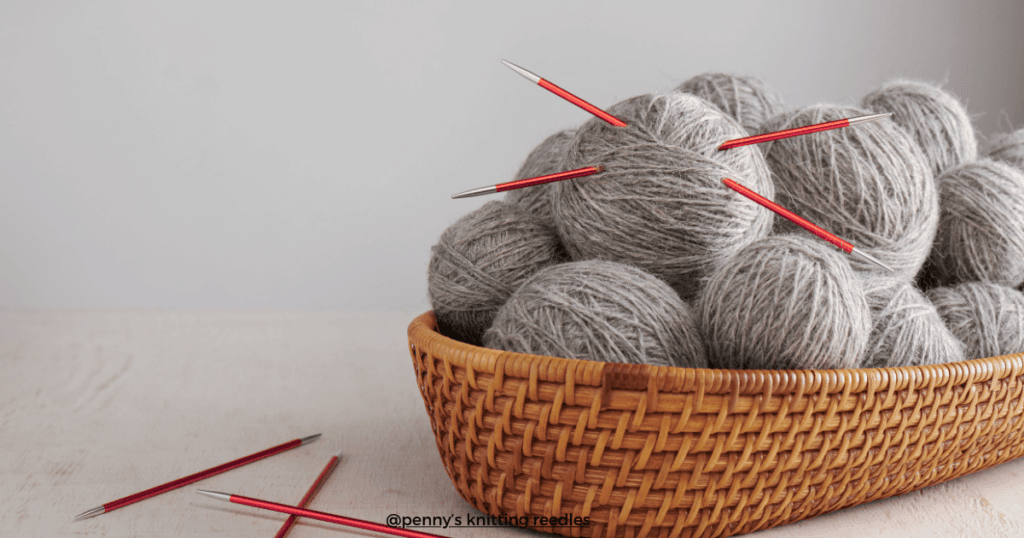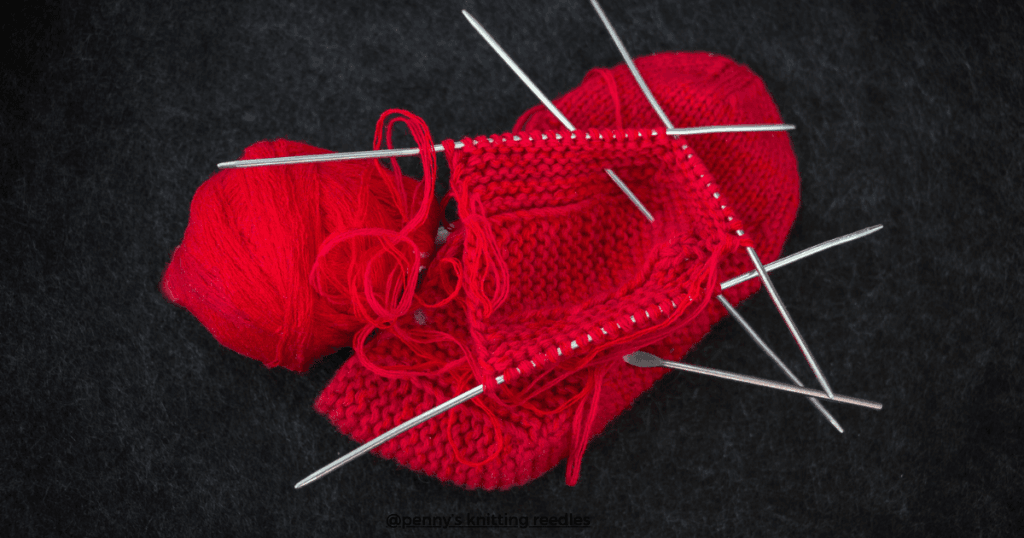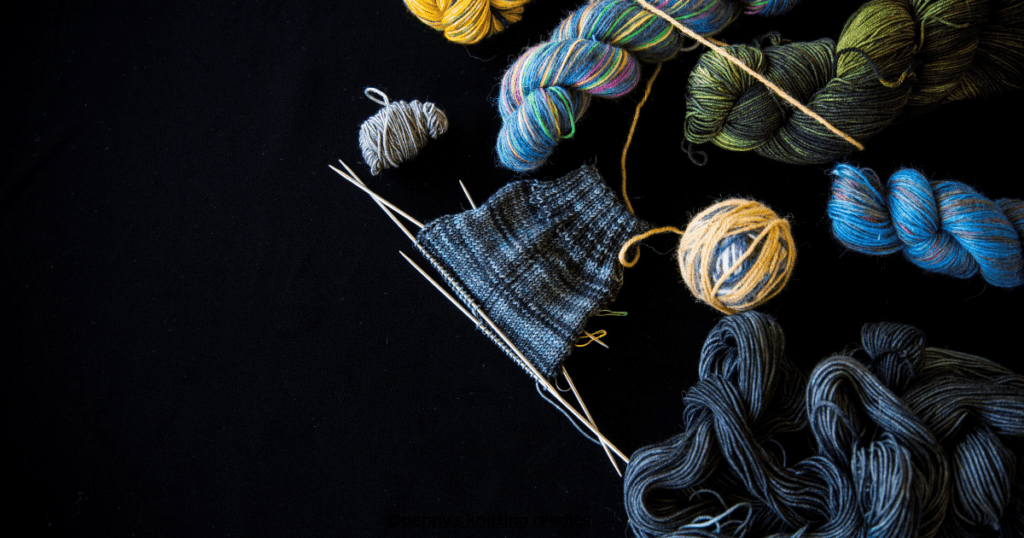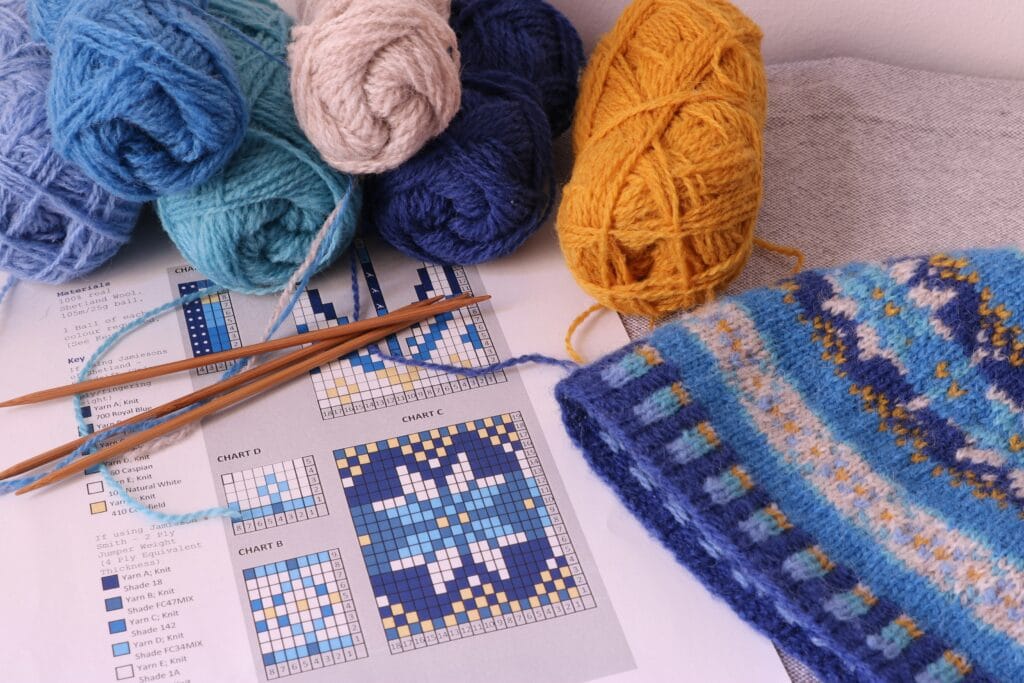Knitters often need to create smooth tubes for socks, mittens, or a hat’s crown. Double pointed knitting needles are a great way to get the job done in our crafting toolkit.
Double pointed knitting needles (DPNs) have points at both ends and let you knit in the round without seams. Your knitting will be affected by the type you choose – bamboo needles give a better grip, while metal ones last longer.
Let’s explore these essential tools together. You’ll discover how to pick the best double pointed knitting needles for your projects and use them properly. The material choice matters a lot, and you’ll learn to avoid common mistakes while finding perfect projects for your DPNs.
What Are Double-Pointed Knitting Needles?

The sort of thing I love is the world of double pointed knitting needles – or, as we knitters like to call them, DPNs. These unique tools have been woven into our knitting tradition for centuries, bringing something unique to our craft.
Double pointed knitting needles live up to their name – they’re slender needles with points at both ends. You’ll find them in sets of four or five needles. Most knitters use three or four needles to hold the stitches while they work with the remaining needle.
Different terms like “double-pointed,” “double-ended,” and “double-sided” needles float around. These terms all point to the same tool. The distinctive feature shows points on both ends, unlike traditional straight needles that have a stopper on one end.
When to Choose DPNs
Double pointed needles shine best with small circumference projects. They create continuous tubes of fabric, which makes them ideal for:
- Socks and mittens
- Small hats and gloves
- I-cords and sleeve ends

These needles range from 4-5 inches for small projects to 8-10 inches for larger items. Beginners should start with wooden or bamboo DPNs. The surface texture provides a better grip and helps manage multiple needles.
DPNs stand out because they handle projects too small for circular needles. They might look daunting with multiple points, but you’ll work with just two needles at a time – just like regular knitting.
Types of Double Pointed Knitting Needles
The variety of double pointed knitting needles available today gives us plenty of options. Let’s explore these choices that can make our knitting experience more enjoyable.
Material Types The market offers these primary materials:
- Bamboo: These lightweight, eco-friendly needles are perfect for beginners and provide excellent grip. They stay at room temperature and warm up naturally as you use them.
- Metal: Crafted from aluminum or stainless steel, these needles have super smooth surfaces for fast knitting. The sharp tips are ideal for intricate patterns, and their durability stands out.
- Wood: These needles share bamboo’s warmth but cost more. They have a smoother finish and sharper tips compared to bamboo.
- Carbon: This modern option combines extraordinary durability with lightweight design and polished tips that make quick work of your knitting.
Size Variations
DPNs come in lengths from 5 to 14 inches. Six-inch needles work best for socks, while 8-inch ones are ideal for hats. The needle thickness substantially affects your projects – DK yarn pairs well with 3.75-4.5mm needles, and chunky wool needs 7-8mm sizes.
Sets vs. Individual Needles
A double pointed knitting needles set proves to be a better investment. Most sets include 4-5 needles per size and let you tackle various projects. Dedicated cases protect your needles from bending and help keep all pieces together.
Best Double-Pointed Knitting Needles
Here’s what I look at when helping other knitters find their ideal DPNs:
- Project Type: Shorter needles (5-6 inches) work best for socks and mittens, while longer ones (7-8 inches) are great for hats
- Experience Level: The natural grip of bamboo helps beginners
- Yarn Weight: Metal needles shine with lighter yarns, and wooden ones grip chunky yarns better
- Knitting Style: Metal works best for tight knitters, while bamboo suits loose knitters
Bamboo DPNs give most beginners extra confidence. The natural friction lets them control stitches better, which helps when juggling multiple needles.
Metal DPNs are worth trying if you’re an experienced knitter working on detailed lace patterns – they offer great precision and smooth yarn movement.
Note that your ideal needle choice might evolve with your skills. Try different materials and brands until you find what feels just right.
How to Use Double Pointed Knitting Needles
Learning to use double pointed knitting needles might feel overwhelming at first. Let me walk you through each step to help you master these versatile tools!

Getting Started
- Cast on all stitches onto one needle using your preferred method
- Distribute stitches evenly across 3-4 needles
- Arrange needles in a triangle or square formation
- Join in the round, being careful not to twist stitches
- Use the remaining needle as your working needle
Using 4 holding needles instead of 3 creates a shallower angle, making knitting easier. Beginners should cast on extra stitches to practice before starting their actual project.
Preventing Common Issues
Laddering – those pesky gaps between needles – is our biggest challenge. Here’s a proven technique to avoid them:
- Pull gently after the second stitch (not the first) on each new needle
- Keep needles close together during transitions
- Think about using 5 needles instead of 4 to improve tension
- Shift your joining point occasionally to prevent ladder formation
Practice makes perfect, so don’t feel discouraged if your first few rounds show some laddering. These issues naturally fade away by the eighth or twentieth project for many knitters.
The stitches should be pushed toward each needle’s center as you work. This technique prevents dropped stitches and helps maintain even tension throughout your project.
Note that minor laddering often disappears after washing and wearing your finished piece. A consistent tension will help you create beautiful, seamless projects quickly!
Projects Perfect for Double-Pointed Knitting Needles

Double pointed knitting needles are excellent tools to create small, seamless projects. I’ve found many ways to use these versatile tools and can’t wait to share my favorite projects with you!
Socks are where DPNs shine. The 5-inch needles give you perfect control to work with small circumferences. DPNs are great because they handle both cuff-down and toe-up designs effortlessly.
Hats become much easier with DPNs, especially for crown decreases. Most knitters start with circular needles but switch to DPNs at the top section to get smooth shaping. A simple ribbed hat pattern using 120 stitches makes a great starting point for beginners.
Mittens and gloves bring exciting challenges to the table. DPNs excel at creating fitted fingers and thumbs. You’ll need 24-28 stitches spread across three DPNs to make a basic mitten. These needles give you perfect control to shape intricate fingers.
Knitting toys and amigurumi has become one of my unexpected favorites. The process takes longer than crochet – I once spent 59 minutes knitting just one tiny leg. The results are worth every minute! DPNs create beautiful, seamless pieces and let you knit arms and legs onto the body without any seaming.
Here are some unique projects where DPNs stand out:
- Convertible mittens with flip-tops
- Knitted knockers for charity
- Stress balls and cat toys
- Baby booties and moccasins
Caring for Your Double-Pointed Knitting Needles
Caring for double pointed knitting needles goes beyond essential tool maintenance – our crafting companions deserve attention. Good maintenance habits can extend their life significantly.
Smart Storage Solutions: I’ve found several clever ways to keep our DPNs safe and easy to find:
- Handwork Hardware containers with built-in size gauges
- Makeup brush storage containers for table display
- Needle roll-ups (perfect for travel)
- Zipper binder pages holding up to 8 DPNs
- Travel toothbrush holders for individual sizes
Material-Specific Care Different materials need different types of care. Your bamboo and wooden needles need moisturizing at least once a year. A gentle coat of beeswax or a quick rub with waxed paper keeps them smooth and prevents splitting.
Metal needles stay tarnish-free with a quick wipe using a microfiber cloth. Sticky needles? Window cleaners work great, so make sure to dry them well.
Protection Tips
Point protectors are a must, especially for smaller sizes. Fine DPNs (below 4mm) need extra care as they can snap even when well-made. Your needles will keep their shape if you store them away from direct heat and avoid putting pressure on them.
Note that regular checks for rough spots or splits help catch problems early. Wooden needles with rough patches? A gentle buff with extra-fine sandpaper brings back their smoothness.
Where to Buy Double-Pointed Knitting Needles
Quality double pointed knitting needles are easier to find than you might think! Head to our shop page, and you will find a variety of products from which you can purchase!
Here are the key things to think about before you buy:
- Set contents: Quality sets typically include five needles per size
- Length options: You can pick between 5-inch for socks or 7-inch for larger projects
- Material finish: The surface should work smoothly with your yarn type
- Storage solutions: Premium sets often come with cases to keep everything organized
Prices vary quite a bit between specialized knitting stores and larger craft retailers. Sets usually give you better value than buying individual needles, especially if you’re building your collection.
Conclusion
Double pointed knitting needles might initially look tricky, but they have become my most reliable tools for creating smooth projects.
My experience with DPNs taught me that success depends on picking the right material that matches your skill level. Bamboo works best for beginners who need more control, while metal suits experienced knitters looking for speed.
These adaptable needles create endless possibilities for projects ranging from simple socks to detailed gloves. The proper care and storage will make your DPNs last years, and choosing smart materials will complement your knitting style.
You’ll develop your rhythm with DPNs when you’re ready to knit your first sock or add to your needle collection. Simple projects and proper maintenance will help you become skilled at using these vital tools. Each project builds confidence, and you’ll soon understand why DPNs remain a treasured part of our craft across generations.
FAQs
What length of double-pointed knitting needles should I choose?
The length of double-pointed needles depends on your project and personal preference.
Shorter needles (5-6 inches) work well for small-circumference items like socks and mittens, while longer needles (7-8 inches) are better suited for larger projects like hats.
How can I prevent ladders when knitting with double-pointed needles?
To avoid ladders, gently tug the second stitch (not the first) on each new needle, keep your needles close together when transitioning, and consider using five instead of four for better tension. Moving your joining point occasionally can also help prevent ladder formation.
What projects are best suited for double-pointed knitting needles?
Double-pointed needles excel at creating small, seamless projects such as socks, mittens, gloves, and the crown decreases of hats. They’re also great for knitting toys, amigurumi, and unique items like convertible mittens or knitted knockers for charity.
How should I store and care for my double-pointed knitting needles?
Store your needles in dedicated cases or containers to prevent loss and damage. Moisturize bamboo or wooden needles annually with beeswax or rub them with waxed paper. Metal needles can be kept tarnish-free with a microfiber cloth wipe. Always use point protectors, especially for smaller sizes.
Do I need double-pointed needles if I have circular needles?
While circular needles with the magic loop technique can handle most projects, double-pointed needles offer advantages for specific tasks.
They’re handy for small circumference knitting, shaping the crown of hats, and creating I-cords. Ultimately, it’s a matter of personal preference and the specific requirements of your projects.